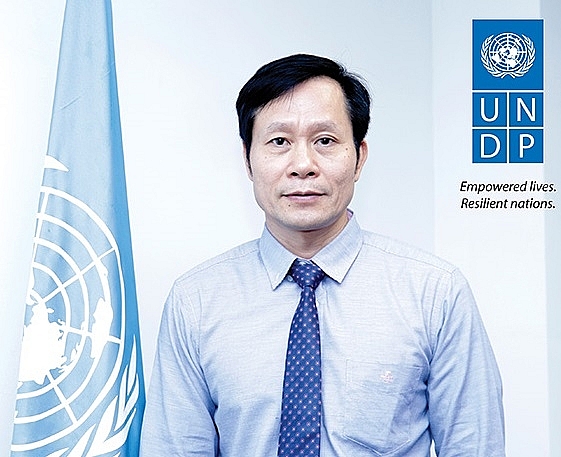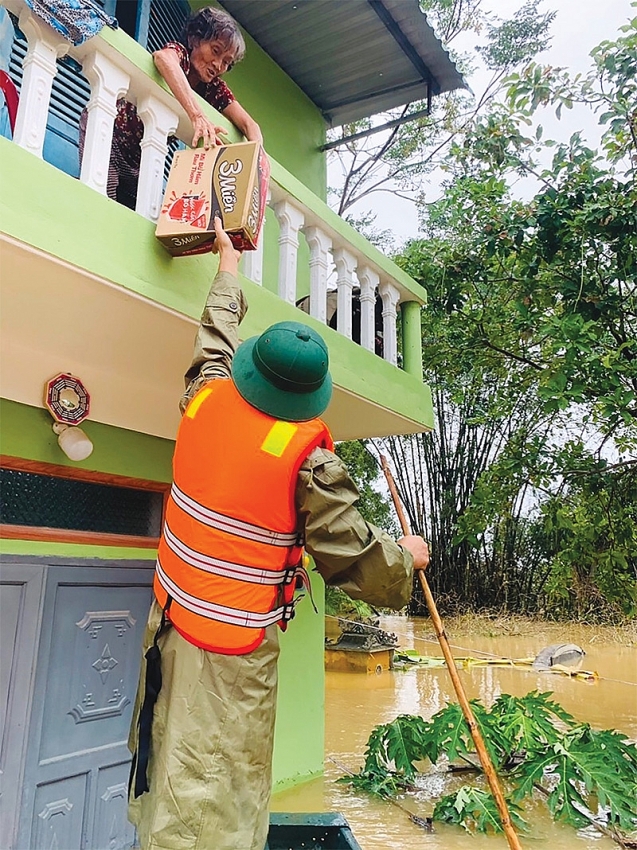
 In The News
In The News
As published in Vietnam Investment Review on 28 December 2021
The Green Climate Fund, the Vietnamese government, and the United Nations Development Programme (UNDP) are joining hands in a project to improve the resilience of coastal communities to climate change in Vietnam. Dao Xuan Lai, assistant resident representative, and team leader of Climate Change and Environment from the UNDP in Vietnam, told VIR’s Thanh Tung about the significant impacts the initiative has made for poor people in coastal communities up and down Vietnam.

The Green Climate Fund (GCF) along with the government and the UNDP have for several years been working closely together to vastly improve the livelihoods of people at risk to floods, storms, and general climate change impacts. How did this initiative come about and what does it entail?
Vietnam is among the countries most vulnerable to climate change and heavily affected by natural disasters with economic losses of up to 4 per cent of GDP in the near future. Given its long coastline of 3,260km where more than 19 million people are living across 28 coastal provinces, families are frequently exposed to the risks of disasters and sea level rises.
Enhancing the resilience of people and the economy of these provinces are essential for sustainable socioeconomic growth and poverty reduction to ensure no-one is left behind in Vietnam. Since 2016, the UNDP has provided technical support to the Ministry of Agriculture and Rural Development (MARD) and the Ministry of Construction (MoC) to develop and mobilise one of the largest grant-funding projects, at a total non-repayable fund of $30 million from the GCF.
The project builds on and complements the country’s strategies in this area, while introducing innovation elements to scale up the government’s important programmes. These include the Government’s Housing Programme for central provinces, the Sustainable Mangrove Forest Development Programme, and the Community-based Disaster Risk Management Programme.
The scheme takes an integrated approach to support local vulnerable communities in seven provinces of Nam Dinh, Thanh Hoa, Quang Binh, Thua Thien Hue, Quang Nam, Quang Ngai, and Ca Mau, to strengthen their knowledge, skills, capacity, and resources to cope with increasing impacts of natural disasters and climate change.
Specifically, the project aims to build resilient homes for the poor, near-poor, and especially households led by women. Meanwhile it also helps plant and rehabilitate mangrove forests as green walls to protect people, their property, and local infrastructure. It also helps equip local communities with skills to identify climate risks and utilise climate information for local planning.
How important is this project for poor people in Vietnam, and could you share some specific outcomes?
Vietnam is setting the best global example for poverty reduction. Thanks to doi moi, the country has successfully transformed from one of the world’s poorest nations in the 1990s into a lower middle-income country in 2010.
The national average poverty rate was only 4 per cent by the end of 2019, but the gap between the rich and the poor is on the rise. The government is making greater efforts to reduce the poverty rate of at least 1.5 per cent, per annum.
This joint UNDP-GEF and Vietnam project is making a very good contribution towards poverty reduction in Vietnam by mobilising external resources to build houses for the poor and introduce innovative models and provide resources to the local communities to enhance their livelihoods.
To date, the project has built and handed over more than 3,300 resilient homes to 16,500 poor and near-poor in five coastal provinces, and planted and regenerated over 3,500 hectares of mangroves to act as sources of sustainable livelihoods for coastal communities. The project has also introduced 17 innovative livelihood models to enable about 1,300 households to increase their average income by between 10-20 per cent.

One of the key aims of the project is to continue constructing as many as 4,000 storm- and flood-resilient houses in five provinces. Will this number be enough to make a real difference when looking at the overall dangers vulnerable people face?
We have witnessed more than 1.5 million people affected and 620,000 houses flooded, damaged, or destroyed in the coastal provinces of Central Vietnam in October alone. One of the key reasons why so many people are affected and in need of humanitarian support is simply because their homes could not withstand strong floods and storms, leading to loss of almost all of their possessions to the floodwaters.
Housing is the greatest asset of a family. If their homes and possessions are damaged, they will not have the means to invest in repairs, reconstruction, or purchasing necessities. Therefore, this major project has been placing special focus on designing and building low-cost but resilient housing for vulnerable households on the coast.
The 3,300 resilient houses already constructed have fared very well through the storms and floods of 2019 and 2020, saving lives and protecting property.
In the context of increasing impacts of natural disasters and climate change in Vietnam, we need to continue mobilising support from all stakeholders to build resilience for our communities. The need is huge, with at least 24,000 resilient homes in coastal provinces.
Could the construction of such homes by expanded to all 28 coastal provinces and cities of Vietnam now vulnerable to natural disasters?
Vietnam is giving priority to a sustainable coastal economy in the coming decade as outlined in the Party’s Resolution No.36-NQ/TW and in the draft Socio-Economic Development Strategy 2021-2030. As a result, it is essential to ensure the protection of the 19 million people and the infrastructure across 28 coastal provinces for sustainable development.
Therefore, the integrated approach and successful stories of the joint UNDP-GCF and the government project in seven provinces should be replicated and scaled up to all 28 coastal provinces.
According to a recent study carried out by the MoC and supported by the UNDP, the needs for resilient housing is indeed large. The study has identified the requirement to build 100,000 resilient homes in all coastal provinces, of which over 24,000 require urgent attention in order to protect people’s lives and possessions.
Replicating and scaling up resilient housing models in Vietnam requires concerted efforts by the government, the private sector, individuals, and development partners. We believe that the more storm- and flood-resilient houses are built, the less people will suffer from the impacts of disasters, leading to less people needing emergency support in the future.
We would like to invite all partners to join with us to build more of these vital homes in Vietnam.
How can the UNDP and the GCF continue cooperation with Vietnam in order to implement such significant projects in the country in the years to come?
Building on the good progress and great success of the resilient housing under this initiative, the UNDP has been working closely with the MoC to develop a brand-new resilient housing programme, which we hope will be endorsed by the government for implementation from 2021.
The UNDP has worked with the MARD’s Vietnam Disaster Management Authority to review the government’s “Community Awareness-Raising and Community-Based Disaster Risk Management” programme, which was implemented during 2009-2020. Based on the results of this evaluation, a new programme covering the 2021-2030 period has been elaborated on and submitted to the prime minister. Once approved, this will help to mobilise resources to enhance disaster preparedness at the local level.
The UNDP strongly reaffirms its continued commitment to supporting Vietnam, both in the short- and long-term as we work hand-in-hand with the government and development partners at national and local levels to build a safer, greener, and more climate-resilient future where no-one is left behind.
 Latest News
Latest News
- Integrating Disaster Risk Reduction into Socio-economic Development Planning processes in Viet Nam (07/04/2022)
- Vietnamese Business Networks Responding to Disasters, Climate Change, and Epidemics (15/10/2021)
- Launch of Student Communications Competition on Resilience to Climate Change and Disasters (12/10/2021)